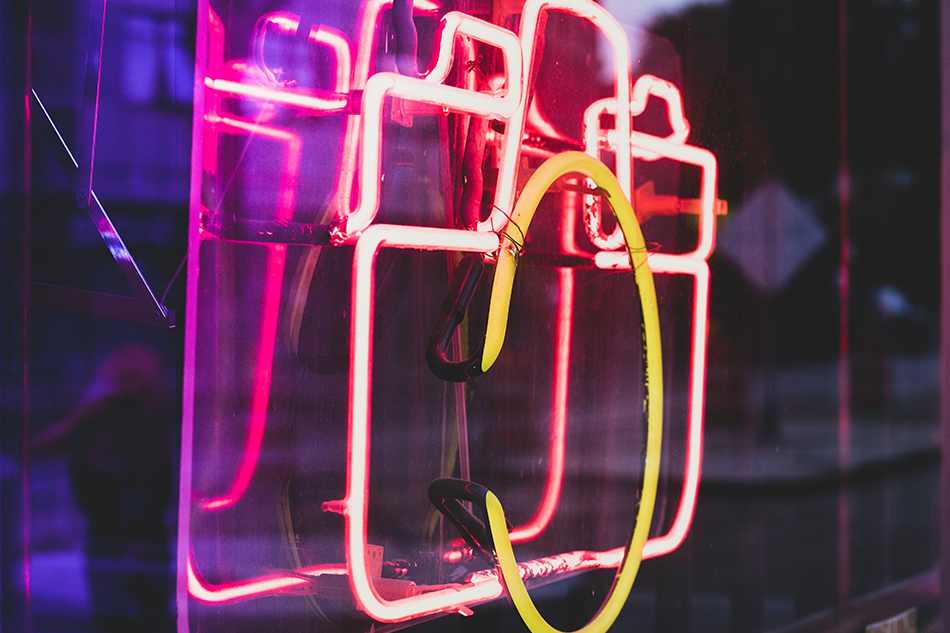Time:2025-05-19
The lighting industry is witnessing a paradigm shift as mini neon lights emerge as a versatile solution for commercial, residential, and artistic applications. Combining the nostalgic charm of traditional neon with modern efficiency, these compact lighting systems are redefining how spaces are illuminated and experienced. This article delves into the transformative role of mini neon lights, explores emerging market dynamics, and offers insights into leveraging their potential for branding, design, and sustainability.
The Resurgence of Neon in Contemporary Design
Neon lighting, once synonymous with retro aesthetics, has been reinvented through miniaturization and technological advancements. Modern mini neon lights cater to evolving demands by:
Bridging Eras: Blending vintage appeal with sleek, minimalist designs suitable for modern interiors and exteriors.
Enhancing Ambiance: Offering customizable colors and intensities to evoke specific moods—serene tones for wellness spaces, dynamic hues for entertainment venues.
Supporting Micro-Spaces: Compact sizes ideal for urban environments, pop-up shops, and small-scale installations where traditional neon is impractical.
This adaptability positions mini neon lights as a staple in both heritage restoration projects and futuristic architectural concepts.

Market Drivers Fueling Mini Neon Adoption
Several factors are accelerating the global demand for mini neon lights:
Urbanization: Growing need for space-efficient lighting in densely populated cities.
Experiential Retail: Brands prioritizing immersive in-store experiences to compete with e-commerce.
Social Media Culture: Photogenic lighting solutions that drive user-generated content and viral marketing.
Sustainability Mandates: Shift toward energy-efficient alternatives to traditional incandescent and fluorescent lighting.
Industries such as hospitality, retail, and real estate are leading the charge, integrating mini neon lights into lobbies, signage, and accent walls.
Cutting-Edge Innovations in Mini Neon Technology
Recent advancements are expanding the functionality and appeal of mini neon systems:
Smart Connectivity: Integration with IoT platforms for remote control via smartphones or voice assistants, enabling dynamic lighting schedules and effects.
Hybrid Materials: Development of bendable, shatter-resistant tubes using advanced polymers, enhancing durability and safety.
Eco-Conscious Production: Adoption of recyclable components and solar-compatible power systems to reduce environmental impact.
Art-Tech Collaborations: Partnerships between lighting manufacturers and digital artists to create programmable, interactive installations.
These innovations ensure mini neon lights remain at the forefront of lighting technology while addressing contemporary challenges.
Strategic Applications Across Industries
Retail: Framing window displays with neon borders to guide customer focus to featured products.
Hospitality: Using neon accents in hotel bars or restaurants to create signature aesthetics that enhance guest experiences.
Residential: Incorporating neon wall art or under-cabinet lighting to personalize living spaces.
Public Art: Facilitating community engagement through large-scale neon installations in parks or cultural districts.
For example, a boutique hotel chain in Barcelona uses mini neon lights to outline architectural details, merging historic charm with modern flair.
Overcoming Industry Challenges
While mini neon lights offer numerous benefits, businesses must navigate:
Cost Perceptions: Educating clients on long-term savings from energy efficiency and durability.
Installation Complexity: Partnering with suppliers offering modular kits and professional installation support.
Regulatory Compliance: Ensuring adherence to regional safety standards, especially for outdoor or public installations.
Solutions include transparent cost-benefit analyses, user-friendly DIY kits, and supplier-provided compliance certifications.
Consumer Preferences Shaping Future Designs
Personalization: Demand for bespoke designs, from monogrammed home décor to branded corporate installations.
Sustainability: Preference for suppliers with circular economy practices, such as recycling programs or carbon-neutral shipping.
Interactivity: Growing interest in lights responsive to environmental cues like sound, movement, or touch.
These trends are pushing manufacturers to prioritize flexibility and eco-innovation in product development.
The Future of Mini Neon Lighting
Anticipated developments include:
AI-Driven Customization: Algorithms that generate design recommendations based on space dimensions and user preferences.
Energy Autonomy: Integration of energy-harvesting technologies, such as solar cells or piezoelectric materials, for self-sustaining systems.
Health-Centric Designs: Tunable spectra that align with circadian rhythms to support human well-being in workplaces and homes.
Conclusion
Mini neon lights are more than a lighting trend—they represent a convergence of art, technology, and sustainability. By embracing their versatility and staying attuned to market shifts, businesses can harness mini neon lights to create captivating environments that resonate with modern consumers.
To capitalize on this potential, collaborate with forward-thinking suppliers who prioritize innovation, quality, and environmental stewardship. In doing so, your projects will not only illuminate spaces but also inspire and engage, securing a competitive edge in an ever-evolving market.